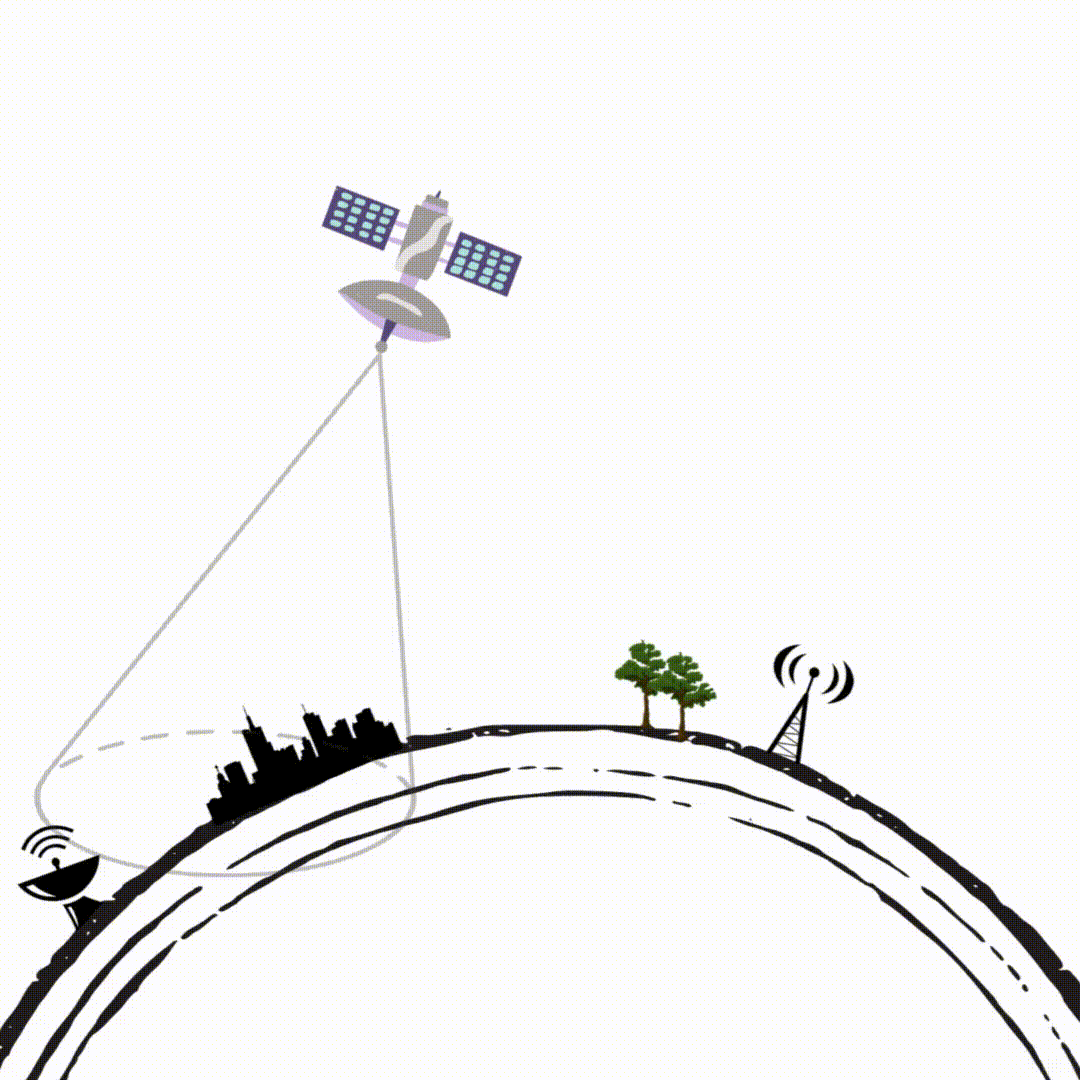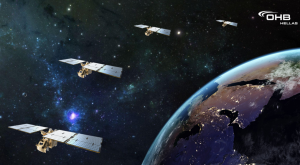AI/ML for Space
Why AI in Space?
In the rapidly evolving landscape of space, artificial intelligence (AI) and machine learning (ML) are becoming essential tools that enhance our capabilities and streamline operations. With vast amounts of data generated by satellites and missions, these technologies enable the efficient analysis and interpretation of information, leading to autonomous decision-making and improved mission safety. By harnessing AI and ML, we not only accelerate our exploration efforts but unlock new opportunities for scientific discovery.

Versatility
Improve mission adaptability by running multiple AI applications simultaneously at the source on a single satellite, even utilizing the same data.
Latency
Significantly decrease the time it takes to extract actionable insights from satellite-captured images.
Data Volume
Optimize storage onboard satellites and minimize bandwidth usage for more efficient communication from satellite to Earth.
Autonomy
To achieve our aspirations in space, spacecraft must be equipped to operate more independently, processing data, making decisions, and ensuring their own protection.
Challenges
Despite the promising potential of AI and ML, several challenges must be addressed to fully leverage these technologies in space. From ensuring high-quality data collection to managing real-time processing under harsh environmental conditions, each obstacle requires innovative solutions and interdisciplinary collaboration. This section explores the key challenges faced when implementing AI and ML systems in space exploration and the critical steps needed to overcome them.
Environmental Conditions
Spacecraft operate in harsh environments with extreme temperatures, radiation, and other factors that can affect the performance of AI/ML systems.
Integration in Spacecraft
Integrating new AI/ML technologies with current satellite or spacecraft systems can be complex and requires thorough testing and validation.
Relialability
AI/ML systems need to be reliable and robust, able to handle unexpected conditions or data anomalies that could arise during space missions.
Data Quality and Quantity
Space data can be sparse, noisy, or incomplete. AI/ML models require high-quality, extensive datasets for training, which can be difficult to obtain from space missions.
Real-time Processing
Space missions often require real-time data analysis for immediate decision-making. Implementing AI/ML algorithms that can operate effectively in real-time is a significant challenge.
Computational Resources
There are limitations on computational power on spacecraft due to size and energy constraints, which can hinder the implementation of complex AI/ML models.
Interdisciplinary Expertise
Developing AI/ML solutions for space requires expertise across various fields, including aerospace engineering, computer science, and domain-specific knowledge of space missions.
Ethical and Regulatory Considerations
As AI technologies evolve, so do the ethical and legal aspects regarding decision-making by autonomous systems in space, necessitating careful consideration.
Why in Greece?
Emerging Tech Hub
Greece is witnessing a flourishing tech and startup ecosystem, attracting significant investment from major tech companies like Google, Amazon, and Microsoft. This global interest underscores the country’s potential as a leader in advanced technologies, including AI.
Skilled Talent Pool
Greece boasts a scientifically advanced and cost-effective talent pool that stands out compared to many other European nations. This resource helps drive innovation and development in space technology and artificial intelligence
Real-time Needs
Recent environmental challenges in Greece, such as forest fires and flooding, have created a pressing need for near-real-time monitoring solutions. AI-driven technologies are essential for effective fire detection, flood management, and maritime monitoring, positioning Greece at the forefront of these critical applications.
Why OHB Hellas?
At OHB Hellas, we are committed to driving innovation in satellite technology and artificial intelligence, empowering our clients with state-of-the-art solutions tailored to the challenges of modern space exploration. By combining our deep industry expertise, advanced technological capabilities, and a robust network of partnerships, we deliver high-performance data processing and actionable insights that enable informed decision-making and optimized mission outcomes.
Expertise of a leading European industrial group.
We can offer a unique value proposition leveraging our relationship with Large European Space Integrators and advance our mission in making Greece a center of excellence in AI/ML for Space.
Customized Solutions
Understanding that each mission and client need is unique, we provide tailored solutions that address specific requirements, ensuring successful outcomes and maximum value.
Partnerships
Our strategic partnerships with leading tech companies and research institutions allow us to stay at the forefront of technological advancements and deliver exceptional results to our clients.
Commitment to Quality and Results
At OHB Hellas, quality and results are at the core of our operations. By adopting the stringent quality policies established by OHB SE, we ensure that our clients receive cutting-edge, dependable solutions that meet the highest industry standards.
The universe is vast, mysterious, and holds countless secrets. While our ancestors looked up at the skies with wonder, today we have the tools, like AI, to take us a step closer to answering some of those age-old questions. Greece, steeped in tales of gods and stars, is not just reminiscing about its past but is actively shaping the future of space exploration. And at the heart of it all is OHB Hellas, not as mere spectators but as pioneers. So, as we stand at this exciting crossroad, we invite you to join us; because sometimes, to move forward, we need to look up.
Heritage - Examples
Below you can find some projects we have accomplished in the field of AI/ML in space:
- Super Resolution
- Fire Detection
- Compression and Classification
- Satellite Communications Optimization
- Cloud Detection
- Vessel Detection
- Flood Detection
Furthermore, detailed examples of our work can be found in our Publications. We recommend our latest paper on one of the best ways to run AI/ML models on-board satellites!
Satellite operations:
Efficiency: AI can improve efficiency in satellite’s operation, reducing the need for human intervention and potential human error.
Example: Have you ever gotten irritated over a slow internet connection? Novel AI Reinforcement Learning algorithms are being developed in order to improve just that! They work by predicting demand as the satellite flies over an area, taking into account factors like whether that area is a city or a rural environment, or the time of day and whether people are sleeping below. Based on those predictions they allocate the available spectrum (the frequencies in which a signal is transmitted down to earth) more optimally [1], resulting in much faster communication.
Real-time Decision Making:
Satellites equipped with AI can make on-the-fly decisions.
Examples: They can adjust their imaging parameters based on cloud cover or other atmospheric conditions. They can use Cloud Detection models that have been tested in space-representative hardware, to adjust parameters and sensors, or even to save bandwidth and not send unusable images down to earth. Bandwidth is a precious commodity in spacecraft, because of the difficulty of sending data across such large distances quickly and with low error rates. Another example of autonomous decision making with ML models is the capability to classify images based on their usability based a classification model. Then we can use a ML compression model to reduce the data size, that varies based on what information we want to preserve. For example if we want to track forest fires we don’t care about very high resolution images in urban areas, and that saves precious time on the data transmission [2]. This can be extremely useful in situations that rely in real-time observations such as flood detection, fire detection or military applications.
Space Exploration:
Rovers like NASA’s Perseverance use AI for tasks like autonomous driving and selecting scientific points of interest.
Example: NASA’s Perseverance Rover is dependent on AI self-driving models. The communication delay between Mars and Earth can be up to 22 minutes [3]. Given that delay, trying to drive a rover a distance of a few meters might take days. Imaging trying to drive your car, and for each input to your steering wheel (and seeing the road in front of you), you would have had to wait 22 minutes each way. Now imagine if the road was full of boulders and you would have to swerve every few meters to avoid them! So being AI-enabled [4], allows the rover to make real-time decisions, avoid obstacles, and cover more ground efficiently, maximizing the scientific return from the mission.
Featured image: Sentinel-2 false-color composite of Fyli, Athens in Greece. Before and after of the August wildfires. It contains modified Copernicus data. Processed by Sentinel Hub, acquired on 2023–08–23 and 2023–08–28.





